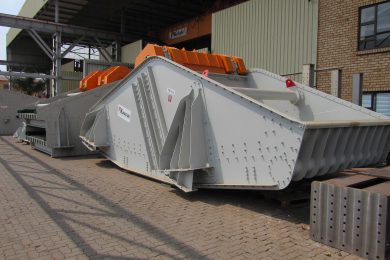While the evolution of dense medium separation (DMS) technology has seen various advances since the mid-1900s, there are still a number of ‘fundamentals’ that will allow users to reduce magnetite losses over the life of a DMS plant.
Speaking shortly after the Southern African Coal Processing Society’s biennial conference in Secunda recently where Kwatani, represented by Jeremy Bosman, presented a paper addressing the impact of appropriate screen selection on dense medium recover and highlighted the importance of adhering to certain ground rules.
“Across the different processes, there are basic principles that are common, such as the use of drain and rinse screens to recover magnetite from the product and reject streams,” says Kim Schoepflin, CEO of Kwatani.
She says a concentration of magnetite in the dilute medium must also be achieved to give a suspension of high relative density, or overdense, medium using wet drum magnetic separators.
Schoepflin outlines the fundamentals to be observed in restricting magnetite losses, regardless of which screening arrangement is chosen.
“The feed arrangement onto the screen must ensure that the full width of the screen is utilised,” she says. “Low feed velocities are also critical, as this maximises the drainage rate on sieve bends and multi-slope screens.”
She emphasises that the drain section, which includes both static and vibrating screens, must have sufficient area to recover 95% of the medium being fed to it, and that allowance must be made for potential blinding which will reduce the open area of the screen.
“It is vital to take the average particle size and bed depth into account when selecting the screen width,” she argues. “Running at too high a bed depth will increase medium carry-over from the drain to the rinse section, and will also reduce the efficiency of the rinse water in washing off the medium; this in turn will lead to an increase in magnetite losses.”
Another important aspect to observe is that sufficient rinse water must be used to wash off the adhering medium, without overloading the wet drum magnetic separators. Provision must also be made at the end of the screen – after rinsing – for the clean coal and reject material to dewater before being discharged off the end of the screen, says Schoepflin.










